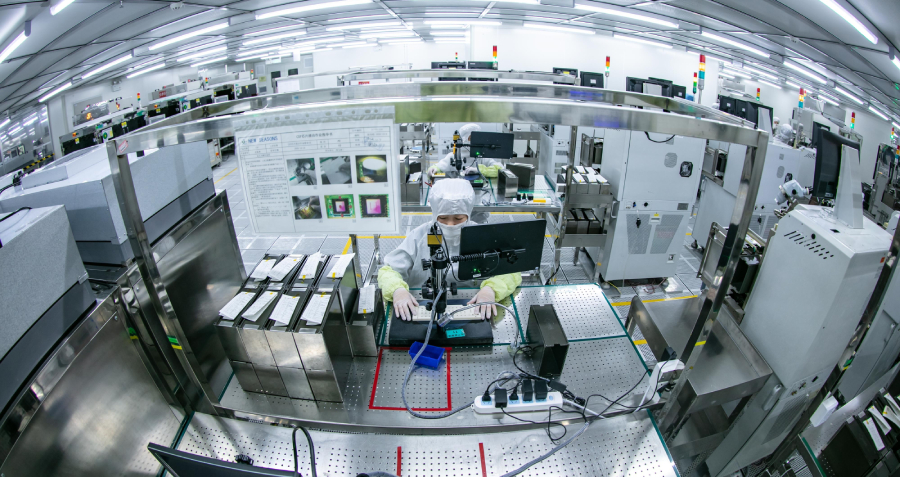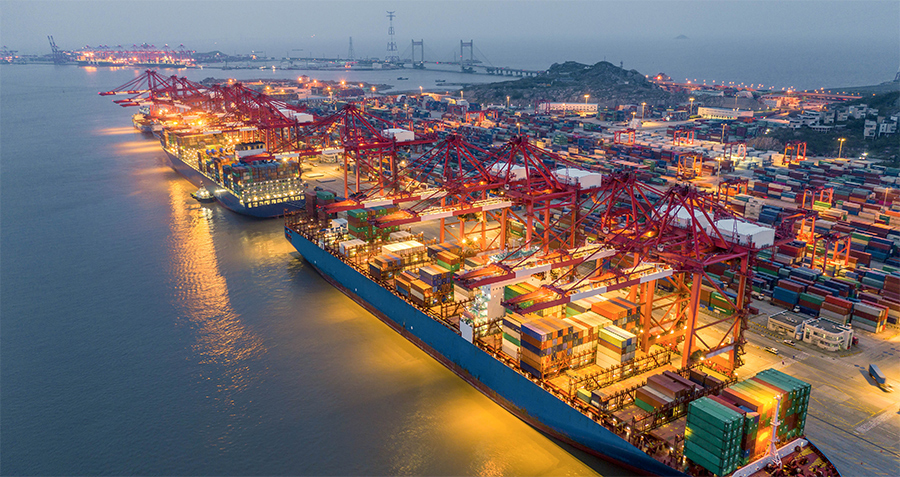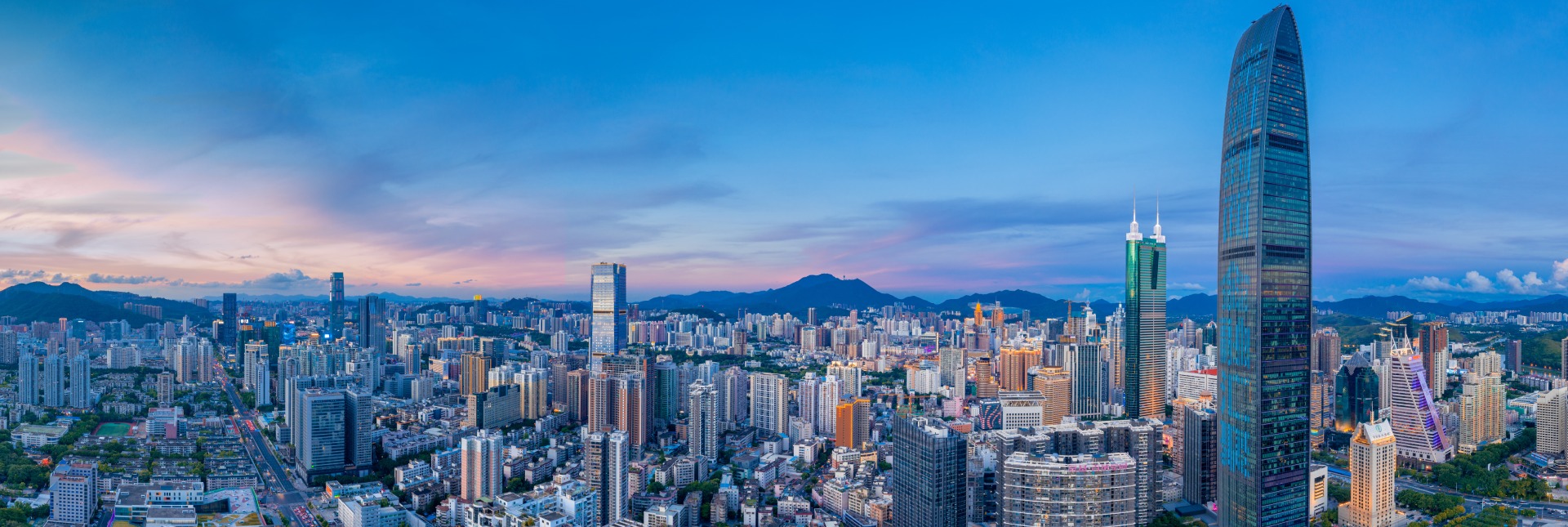During a visit to the Ministry of Industry and Information Technology in 2015, shortly after the introduction of the Made in China 2025 initiative, the then-Premier Li Keqiang remarked that “industrial manufacturing is an important pillar of the national economy, and the key to achieving economic upgrades. Made in China 2025 aims to upgrade the industry to create new economic drivers.”
In the 10 years since the launch of the Made in China 2025 (MIC25) initiative, the country has seen rapid development across wide swathes of its economy and underlying that is the technological progress in so many areas that was the goal of MIC25. China is now the singular global manufacturing powerhouse, accounting for 29% of global manufacturing value added in 2023, and is now the main trading partner for 95% of countries, up from 70% in 2015.
“China has achieved leadership or near-leadership in a wide range of industries identified as strategically important under the Made in China 2025 plan, while becoming highly influential in others,” wrote Jens Eskelund, President of the European Union Chamber of Commerce in China, in its Made in China 2025: The Cost of Technological Leadership report. “There is no doubt that the Made in China 2025 industrial policy, in tandem with an industrious workforce in adaptable and innovative companies, played a critical role in these advances. But, the progress that China has made carries potentially significant consequences.”
Those consequences include an increase in protectionism and decoupling, overcapacity in some sectors for China and growing trade frictions. And these are on top of the initial international pushback against such a coordinated industrial policy that has led to dwindling use of the term Made in China 2025 in official rhetoric. But despite this, China’s self-sufficiency drive continues.
Self-sufficiency drive
China’s self-sufficiency goal has been long in the making. There have been a number of policy initiatives put in place over the past 40 years and more, and in 2006, the government released the National Medium- and Long-term Programme for Science and Technology Development (MLP), which set a goal of reducing China’s “dependence on foreign technology by at least 30%.”
MIC25 was another phase of this project, outlining ten priority sectors—ranging from new energy vehicles (NEVs) and next-gen IT to high-end CNC machinery and solar panels—where China intended to close gaps with advanced economies and take on a development leadership role.
“As time was progressing and China was growing into its role as a manufacturing powerhouse, the government began to realize that much of the key innovation for supply chains was happening overseas,” says Marina Zhang, a researcher on China’s innovation policy and emerging technologies at the Australia-China Relations Institute, University of Technology Sydney. “China has long been trying to get to a certain level of self-sufficiency in its supply chains and Made in China 2025 was the natural evolution of that approach.”
From 2015 to 2025, China undertook a huge mobilization of resources across government, industry and academia to boost industrial upgrading, spur innovation and localize key technologies.
Where are we now?
In terms of progress made, MIC25 has, by and large, been a success.
“Overall, I would say that between 60-70% of the targets on the original list have been met, and in several cases surpassed,” says Zhang. “There are still bottlenecks in some areas, and some targets have shifted into other goals, but China is still working on the areas that are a bit slower.”
According to Bloomberg, among the 13 critical technologies included in MIC25 China has achieved global leadership in five: high-speed rail, graphene, unmanned aerial vehicles, solar panels and electric vehicles and lithium batteries, while closing the gap in the other 7. The country deployed more industrial robots than the rest of the world combined in 2023, and over 530 smart manufacturing parks have been developed, alongside more than 4,000 pilot innovation projects.
Sectors such as shipbuilding, electric vehicles (EVs) and renewable energy have seen dramatic transformations, for example, wind and solar capacity have seen consistent double-digit year-on-year increases. China now leads the world in ship construction, is the world’s largest exporter of photovoltaic (PV) solar panels and has stormed ahead in the production and development of EVs, building integrated industrial ecosystems around these technologies. China’s Product Complexity Index (PCI)—a proxy for industrial sophistication—has also improved markedly, from 0.23 a decade ago to 0.50 today.
“Today, China leads in high-value sectors like EVs, green energy and communications, and is catching up in semiconductors,” says Mark Greeven, Professor of Management Innovation and Dean of Asia at the International Institute for Management Development. “Labor-intensive factories have evolved in some regions into ‘dark factories’ with full automation and AI. In green tech, China dominates global supply chains, holding over 70% of production capacity in areas like solar PV and EV batteries.”
In terms of self-sufficiency and domestic substitution, semiconductors offer a more nuanced picture that is reflected across several other industries. Once almost entirely dependent on imports, China has, according to Zhaopeng Xing, Senior China Strategist at ANZ, achieved about an 80% substitution rate in terms of domestic chip production compared to imports.
But this success is mostly limited to legacy chips of 28nm and above, and although China is now the world’s largest exporter of less advanced chips, it still faces critical chokepoints in advanced chip design and fabrication, a vulnerability exposed sharply during recent US-led technology export restrictions. These advanced chips, which are considered to be those measured at 7nm and below, are key to almost all cutting-edge technologies, including AI systems, data centers and self-driving cars.
Additionally, China continues to depend heavily on foreign technology, high-end machine tools and aerospace components—sectors targeted by ongoing US and EU export restrictions. Profitability in advanced manufacturing, particularly EVs, is strained by overcapacity and market fragmentation. Environmental pressures and resource constraints, especially in energy-intensive industries, pose further complications and global resistance to China’s industrial dominance—through tariffs, supply chain realignment and geopolitical alliances—has also slowed international expansion.
Taking the initiative
Throughout the rollout of MIC2025, industrial subsidies have played a central role. The government, state-owned enterprises (SOEs) and industrial parks continue to funnel generous subsidies to targeted sectors, including cash grants, discounted land, tax breaks and low-interest loans.
A major driver of MIC25’s progress has been the emergence of local innovation ecosystems, with provinces like Anhui building dense industrial clusters where universities, private tech firms and suppliers co-develop solutions in EVs, biopharma and advanced displays. Suzhou and Shanghai have similarly evolved into hubs for biomedical and automation research, and there are many other examples of specialized provincial hubs around the country.
“These industrial hubs are unique to China for now, and are often driven by the local governments themselves,” says Zhang. “They are often joined by a few lead companies at the head of supply chains and build a network of smaller companies underneath.”
The state-led megaprojects, with the involvement of private companies that have in many ways been dragooned into the process in a highly coordinated way, have helped with the growth of adaptive supply chains that has helped China to make a rapid shift to Industry 3.0 and beyond.
“The reality is that 10 years ago, China’s industrialization was at best Industry 2.0, with some pilot examples of 3.0,” says Zhang. “The success here was not just about national strategy alone, but about thousands of bottom-up experiments converging into scalable models.”
Many major Chinese private enterprises have been brought into the development process and harnessed the development momentum over the past 10 years. With several having been designated as national champions, the subsidies from and alignment with the MIC25 goals have led to many now emerging as global leaders.
Examples include drone maker DJI, which is now at the leading-edge globally thanks to the MIC25 focus on high-end equipment and intelligent control systems; CATL is now the world’s largest battery producer, helped by state targets related to energy storage and EV supply chains; and BYD is the world’s largest car manufacturer, and no longer produces ICE cars, largely due to the targets on green vehicles and sustainable transportation.
But, as has been seen several times over in China’s development, while subsidies created strong incentives for companies to get involved in certain industries, they also distorted competition and, in many cases, ignored economic viability as a factor.
“After a while, the industrial subsidies were reduced due to fiscal feasibility; the government simply no longer has the money to give out,” says Xing. “The focus has now switched away from government subsidies towards investment by SOEs and other government vehicles in company shares, to improve the competitive environment.”
Challenges and international friction
Despite its many achievements, MIC25 faced a number of implementation challenges, with inconsistent local execution, overcapacity in some sectors and weak accountability mechanisms hampering efficiency and development, as is often common in state-led development. Additionally, as with many of China’s top-down directives, it suffered from broad and sometimes vague goals, which lacked specific metrics, making it challenging to formally evaluate the outcome.
“Policymakers often lay out a plan, but with no clear guidance on how to achieve the stated goals or how to measure them,” says Zhang. “The targets shift step-by-step, but that is not unusual for China.”
That being said, setting specific goals for technological development is hard to do.
“The document was made 10 years ago when China was still focusing on solar, EV, shipbuilding and trains as key emerging industries,” says Xing. “A lot has changed in a decade and now sectors such as AI and Big Data would certainly be more prominent if another set of targets were to be set out.”
Beijing’s clear ambition has been to dominate key global technologies, as indicated by MIC25. Between 2017 and 2019, the plan became a flashpoint in the escalating US-China trade conflict, and reactions such as sanctions against Huawei and bans on semiconductor equipment sales followed. Similar concerns were expressed by Japan, South Korea and several European countries, fearing unfair competition and industrial hollowing.
As a result, the phrase “Made in China 2025” began to disappear from official Chinese rhetoric, and despite its effects on industry in the country, as well as the continued implementation of its policies, it is not often mentioned today, even though the process continues with growing vigor.
“After a while it was no longer mentioned by name, but most, if not all, of the plans still exist,” says Xing. “The targets haven’t changed, but they are now just found within the country’s Five-Year Plans (FYPs). The 15th FYP, which is the next one, will almost certainly pull from MIC25, but not directly quote it.”
There are also some criticisms that MIC25 and its clear preference for supply-side development has led to a de-prioritization of demand-side growth in China, evidenced by the country’s current struggles with consumption levels.
MIC25 also significantly impacted many foreign firms operating in China, with its prioritization of domestic companies in key high-tech sectors through subsidies, policy support and procurement preferences. China has increasingly introduced technical standards, data regulations and cybersecurity laws that have created barriers for foreign firms. MIC25 accelerated this shift by promoting indigenous standards and requiring local compliance measures that are often more favorable to domestic players. Investment restrictions in sensitive sectors further complicate entry or expansion for foreign companies, particularly in areas the policy designates as strategically important.
It should also be said that, over time, many of the same countries that pushed back against MIC25 have begun to consider and pursue their own mission-oriented industrial policies. The EU’s Green Deal Industrial Plan, Japan’s Society 5.0 and the US CHIPS and Science Act all reflect a broader realization: market forces alone may not be sufficient to secure technological leadership, particularly in the face of China’s approach.
“The US CHIPS Act and the EU’s green tech investments reflect a broader shift toward state-supported innovation. In emerging markets, China’s approach influences infrastructure upgrades and industrial capacity building, particularly through Belt and Road projects in rail and clean energy,” says Greeven. “MIC2025 helped reignite global interest in industrial strategy.”
From blueprint to benchmark
Ten years on from the introduction of MIC25, the geopolitical landscape and the global economy have changed markedly, and this has played a role in galvanizing China’s doubling down on industrial policy.
“Efforts to counter MIC25—such as US export controls and European industrial plans—may have unintentionally reinforced it,” says Greeven. “These actions accelerated China’s focus on self-sufficiency and increased R&D spending in biotech, semiconductors and green energy.”
As MIC25 enters its post-decade phase, there has been talk of a future iteration of the policy aimed at 2035, and a May Bloomberg report stated that the plan would likely prioritize technology, including chipmaking equipment. But the content of this plan, as well as the next Five-Year Plan that is set to come into action in 2026, is still being debated and could undergo substantial changes before their release. It also cautions that the 2035 plan is not expected to carry the Made in China moniker to avoid drawing the criticisms that were leveled at MIC25.
“There is unlikely to be another specific Made in China plan,” says Zhang. “But there will be a number of very similar-looking policies in the upcoming 15th Five-Year Plan, as well as in the push for ‘new productive forces.”
China will clearly continue its self-sufficiency drive, as well as take a leading role in AI, clean energy, quantum computing and biomanufacturing, among many other industries. In a visit to a factory in late May, Chinese leader Xi Jinping confirmed that the long-term goal remains the same.
“From relying on imports of foreign matches, soap and iron in the past, we have now become the world’s largest manufacturing country,” he said. “We need to keep improving our manufacturing sector, insist on self-reliance and self-improvement [and] master key core technologies.”




















